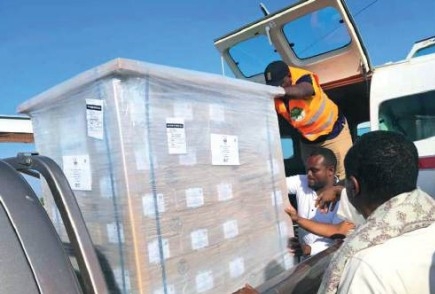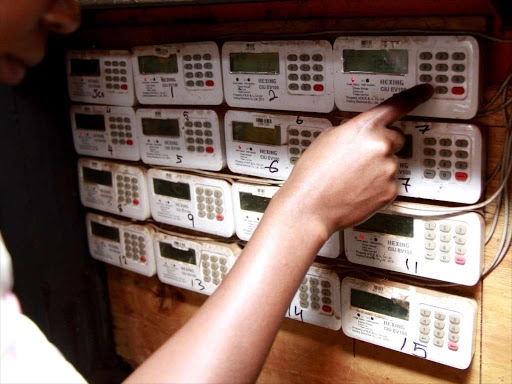As the planet boils up, many people are going for air conditioners.
Many use refrigerators to preserve their foods.
Top scientists have however raised a red flag as some of the cooling equipment is responsible for warming up the planet.
In fact, scientists from the Intergovernmental Panel on Climate Change (IPCC) warned early this year that human activities, principally through emissions of greenhouse gases, have unequivocally caused global warming.
The scientists said the global greenhouse gas emissions have continued to increase, with unequal historical and ongoing contributions arising from unsustainable energy use, land use and land-use change, lifestyles and patterns of consumption and production across regions, between and within countries, and among individuals.
To arrest this situation, the Kenyan government on Tuesday unveiled a five-year plan to reduce greenhouse gas emissions from refrigeration appliances.
This is by enhancing the availability and accessibility of sustainable cooling solutions.
The 2023-27 National Cooling Action Plan for Kenya (NCAP) was unveiled at a Nairobi hotel on Wednesday by Environment and Climate PS Festus Ng’eno who said it puts the country on a path towards a "green, cool revolution".
"With this plan in place, we are charting a course towards a more efficient, eco-friendly, and inclusive Kenyan refrigeration and air-conditioning sector."
He said the goal is to make sustainable cooling accessible for every Kenyan by using efficient appliances, environmentally-safe refrigerants, and enhancing access to agricultural cold chains.
Ng’eno, who represented CS Soipan Tuya, said the move is aimed at helping the country to meet her global climate action obligations.
"Kenya’s Nationally Determined Contributions (NDC) has committed to reducing greenhouse gas (GHG) emissions by 32 per cent or 143MT of CO2 equivalent by 2030. Therefore, providing conventional cooling services poses a challenge to the attainment of this ambitious target," he said.
Ng’eno said the plan is part of Kenya's climate change mitigation strategy of transitioning the country to low a carbon development pathway.
He said full implementation of NCAP would enhance the performance and energy efficiency of cooling appliances.
Ng'eno said the plan which was developed by the State Department for Environment and Climate Change, will create appropriate conditions for the adoption of sustainable cooling systems.
"We are talking about providing financial incentives for cold storage systems and making sure everyone understands the incredible benefits of zero-emission cold chains.
He said the plan will also support research and development that suits unique local needs adding that the goal is to make innovative business models easily accessible to everyone.
Ng'eno said the move shows Kenya's unwavering commitment to the implementation of the Montreal Protocol and the Kigali Amendment.
Normal cooling equipment directly contributes to greenhouse gas emissions through the production and consumption of chemicals known as hydrofluorocarbons (HFCs) and hydrochlorofluorocarbons (HCFCs), potent greenhouse gases.
Some of the cooling substances used in refrigeration and air conditioning deplete the ozone.
The ozone layer is the natural shield against the sun’s harmful ultraviolet rays, which can cause severe health risks such as skin cancers.
When the ozone layer is destroyed, the ultraviolet rays from the sun to the earth’s surface are increased.
So dangerous are the radiations that they damage the immune system, and increase exposure to skin cancer and eye cataracts.
Long-term exposure to high levels of UVB radiation can severely ruin most animals, plants and microbes.
The National Cooling Action Plan says Kenya has experienced a steady growth in the number of refrigeration and air-conditioning appliances being used.
It says the demand for such appliances will rise sharply due to the growing population and the expected climate change towards warmer temperatures.
“The resulting greenhouse gas emissions from the RAC sector increased from 3.56 Mt CO2eq in 2010 to 3.99 Mt CO2eq in 2015. Based on current trends and a projected hotter climate in Kenya, the GHG emissions from the RAC sector are prone to reach 4.75 Mt CO2eq in 2030 and up to 7.87 Mt CO2eq in 2050,” the plan says.
It says the emissions from energy use in room AC ranged between 0.28 and 0.91 Mt CO2 in 2020.
The diverging emissions mainly originate from the different sales data used and the resulting diverging number of appliances in use.
The Kenya National Cooling Action Plan is designed to enhance access to sustainable cooling for all Kenyans.
The target is a holistic approach across sectors, taking into account the individual appliance, the building shell, as well as cold chains and the cooling needs of the entire population.
This will be achieved by increasing access to and improving the efficiency of cooling appliances available in Kenya, transitioning the cooling sector to refrigerants with low global warming potential in general and to natural refrigerants where feasible, and increasing access to agricultural cold chains.
In addition, the revision of building codes is initiated to mainstream passive cooling and to avoid the lock-in of poorly insulated new buildings that exhibit a high cooling load.















